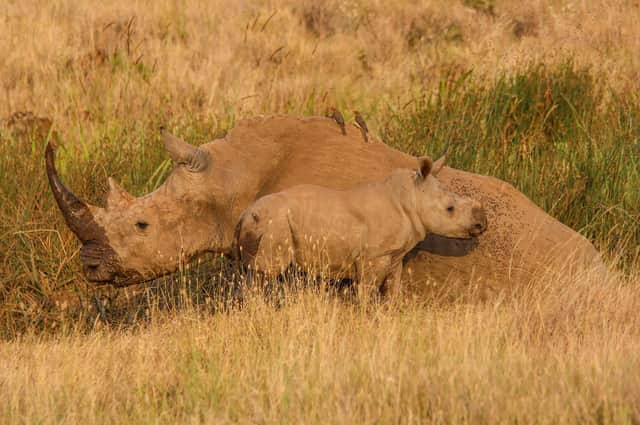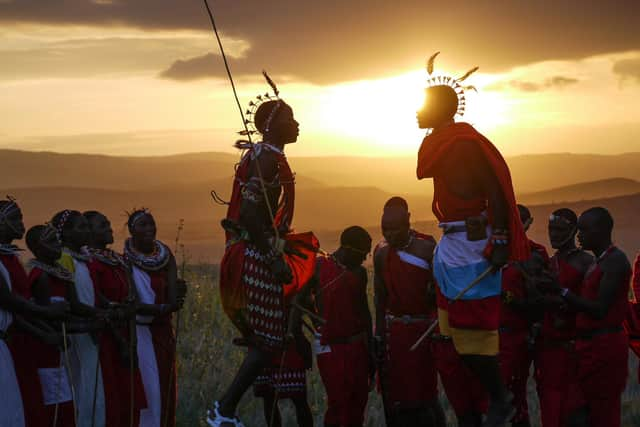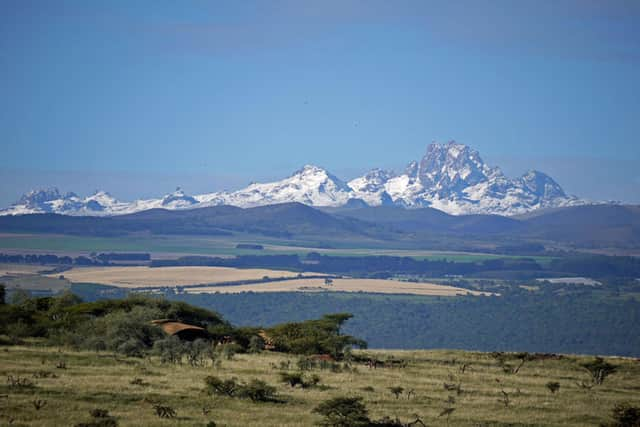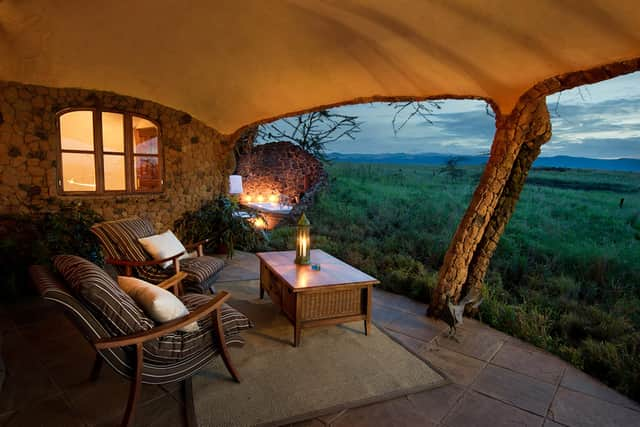Scotland on Sunday Travel Wishlist - Kenya’s Lewa Wildlife Conservancy


When it comes to naming wild animals, the jury is divided. Accusations of petting and anthropomorphising are frequently hurled at anyone who dares to bestow an undomesticated creature with a moniker. But on the undulating grasslands of Lewa Wildlife Conservancy in Kenya, the decision is wholly justified. Every one of their most important inhabitants has a distinct personality.
“That’s Sonia,” explains David, my Maasai guide from Lewa House safari lodge. Armed with two dagger sharp horns and a heavy coat of armour, the formidable warrior looks like she’s charged through a few centuries to get here. Put a ruff around her neck and she could be a triceratops.
Advertisement
Hide AdAdvertisement
Hide Ad“We’ve also got Elvis,” continues David, huddling into his shuka shawl to avoid the early morning chill. “He often likes to come and sharpen his horn on vehicles.”
To identify every rhino on the premises would take some time: there are 238 individuals to track down. What started as a population of 13 animals in 1983, has become one of Africa’s greatest success stories, with a significant baby boom in the last 12 months pushing the fenced sanctuary almost beyond its holding capacity.
All over the world, there are reports of nature prevailing over humanity, tales of animals reclaiming lost habitats while we’ve been stuck in lockdown. In reality, Lewa’s species bounce back is down to much longer-term efforts; a blueprint for future wildlife management, this is one of the most successful conservation models on the continent, where community, tourism and nature all perfectly interlink.
But the pandemic has impacted in other ways. Like so many projects across Africa, Lewa has suffered a drastic drop in funds as tourism has ground to a halt.
Every year, Lewa partner with charity Tusk Trust to hold one of the world’s top marathons, raising funds for community development, education and healthcare initiatives across Africa. And even though 2021’s event, which took place this month, was held virtually, its contribution to conservation is more important than ever before.


In 2019, 1,400 runners joined the marathon, running alongside hyenas, giraffes and endangered Grevy’s zebras. Two years on, the granite hills and dusty roads are empty. I’m the only guest at Lewa House, a collection of thatched cottages gazing out to Mount Kenya. Connected by winding stone paths, the bulbous Hobbit huts could easily have been plucked from JRR Tolkien’s imagination.
Since 1924, they have been home to the Craig family who once owned Lewa but have since turned the 62,000 acre area into a conservancy, only retaining the right to have a home on the land. Descendants Sophie and Callum Macfarlane, who currently live here with their family, know the land intricately and were even married on a plateau overlooking the plains.
On a morning walk, Callum talks enthusiastically about the geology of the area, identifying rocks whose composite minerals sparkle like precious gems in the sun. He takes me to a site now protected by the National Museums of Kenya, where a collection of hand axes is scattered on the ground. Resembling shards of slate, it’s hard to imagine these are pieces of antiquity, but Callum’s colourful explanations bring the inanimate objects to life.
Advertisement
Hide AdAdvertisement
Hide AdWhile Lewa’s past is easily unearthed in these plains, it’s modern nerve centre lies at the JOCC – the Joint Operation Command Centre, where anti-poaching units are co-ordinated, rangers deployed, and collared wildlife is carefully monitored through large computer screens.


“We tracked one elephant all the way to Somalia,” laughs senior radio operator Purity Wamuyu, who is leading my tour. “He was looking for a date.”
Along with monitoring mating movements, the JOCC’s impressive computer systems also have a serious function; keeping track of endangered animals and identifying potential areas of community conflict. Such sophisticated technology is largely responsible for Lewa’s success.
But perhaps the biggest boon to the conservancy is the surrounding community it supports. Although around 300 people are directly employed by Lewa, nearly 5,000 benefit through healthcare, education, and other revenue-boosting programmes. By learning to tolerate any wildlife that might venture onto their land, and sharing reports of any potential poachers, they play a critical role in the conservancy.
On a trip to the Ngare Ndare Forest, an elephant corridor linking Lewa to Mount Kenya, where waterfalls spill into turquoise pools and a canopy walkway is suspended between ancient trees, I encounter a variety of initiatives funded by Lewa and the Ngare Ndare Forest Trust.


This lush indigenous forest at the foothills of Mount Kenya has 200 year-old trees stretching into the canopy, supporting a rich variety of bird and animal life and the elephants from Lewa have been using this vital corridor for centuries. In the 1980s farmland became more developed on its southern side, bringing farmers into regular conflict with elephants until the forest was fenced off in 1992. There I meet gardeners tending a nursery of tree saplings, nurtured for a reforestation project, and a woman who powers her gas stove with a manure-filled biogas digester.
In some way, everyone is connected to the conservancy, playing their own role in protecting wildlife, preserving nature and – inadvertently – providing a safe home for rhinos like Sonia and Elvis.
And although participants in this year’s Lewa Marathon logged on from far flung corners of the globe millions of miles away, every penny raised will forge a vital connection too.
How to plan your trip
Advertisement
Hide AdAdvertisement
Hide AdFor details on the annual Lewa Safari Marathon, visit lewasafarimarathon.com
Abercrombie & Kent (abercrombiekent.co.uk; 01242 386 500) offer a four-night trip to Lewa House from £3795 per person full board, based on travel from September 16 and October 31, 2021. Excludes all flights.


